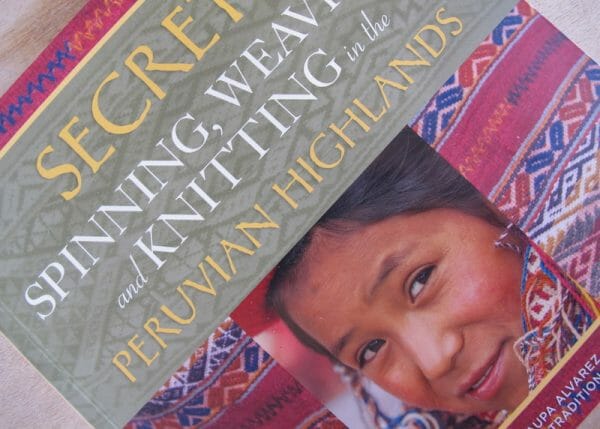“In the Andes, textiles are not a hobby, they are a way of life.
To live is to create textiles, and in creating textiles, you live.”
Nilda Callaňaupa Alvarez
Nilda is the founder and director of Centro De Textiles Tradicionales Del Cusco (CTTC), a non-profit organisation founded in 1996 by traditional weavers in the Cusco region of Peru.
 Starting thread
Starting thread
The story began way back in the 1970’s when a group of Cusco women started small spinning and weaving groups in their homes. They realised that the Cusqueňan textile tradition was disappearing and that the more complicated patterns and techniques unique to their culture were at risk of extinction.
They inherently understood the importance of keeping this knowledge and skills alive and to pass it on to the next generation. These visionary women took the fate of their tradition into their own hands. Hands that knew the ancient ways of hand spinning, dyeing, weaving, knitting and braiding.
They worked together to recover old designs, to relearn ancient techniques and to sell their wares. After years of hard work and with the help of an American ethnobotanist and anthropologist who lived in the area, the CTTC became an official non-profit organisation supporting ten different communities in the Cusco region.
 Leading thread
Leading thread
Nilda had a typical upbringing, learning to spin and weave as a young girl while caring for the family’s sheep. The complex traditional designs intrigued her and inspired her to help preserve this ancient craft.
As the first person in her community to attend college, she became one of the founders of CTTC. As a community organiser and leader, she was a driving force behind the revival of the textile traditions of her ancestors. Today she is an award-winning author, public speaker and an expert in Cusqueňan textiles.
 Spinning thread
Spinning thread
CTTC’s museum, Weaving Lives, provides a glimpse into the whole process of textile production as well as the many ways it is integrated into the daily lives of the Cusco people. Every step of the weaving process is explained and demonstrated in a series of galleries.
From harvesting and spinning the alpaca, sheep or llama fibre – to the different kinds of native plants, animals and minerals used to dye the fibre – to the range of complex techniques and designs used for different kinds of textiles.
The museum also illustrates the different kinds of ceremonies, like weddings and festivals, and the textiles that accompany them. It is a treasure trove of information for travellers and locals alike.
 Weaving thread
Weaving thread
An essential part of CTTC’s work is education. Not only to pass the tradition and skills on to the younger generation, but also to create awareness among the public and tourists. A wide range of workshops, classes and educational tours are organised throughout the year covering skills like spinning, dyeing, weaving, knitting, and braiding.
 Knitting thread
Knitting thread
Jakima Club (named after the narrow woven ribbons children make to learn basic weaving skills) was originally started by a group of kids who made and sold items to support their studies. This became the foundation on which the Young Weavers Groups were based.
The girls meet on weekends to learn weaving skills and the intricate traditional designs. They also learn about community organisation, leadership and management skills. They are the successors of the current generation of community leaders and the guardians of the ancient textile traditions of the Cusco region of Peru.
 Closing thread
Closing thread
Nilda is the author of several books on Peruvian textile traditions. The latest one, Secrets of Spinning, Weaving and Knitting in the Peruvian Highlands, is published by Thrums Books. To learn more about the CTTC and how you can become involved visit their website.
*the images in this post are photos I took of the book. Copyright of the original images belongs to the photographers.



 Starting thread
Starting thread Leading thread
Leading thread Spinning thread
Spinning thread Weaving thread
Weaving thread Knitting thread
Knitting thread Closing thread
Closing thread
